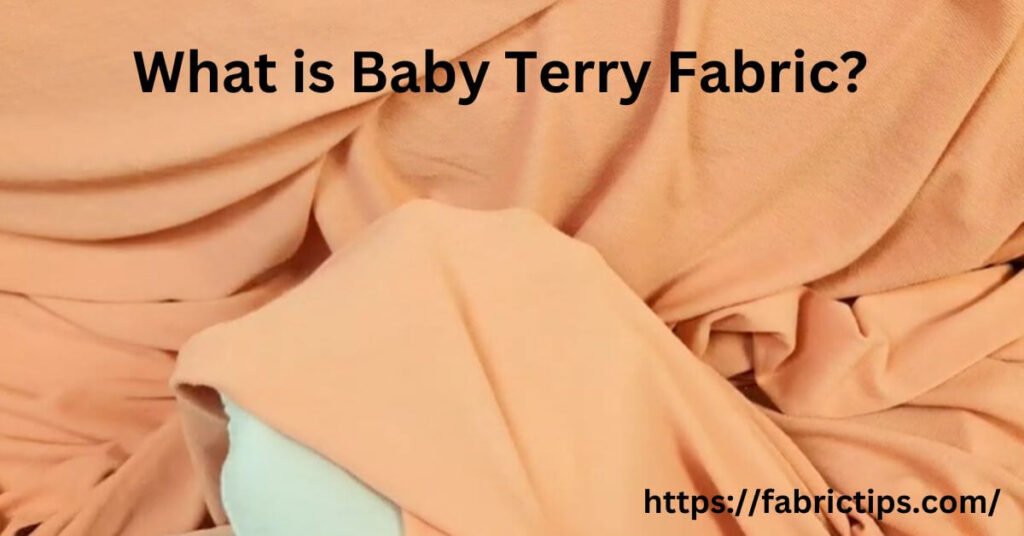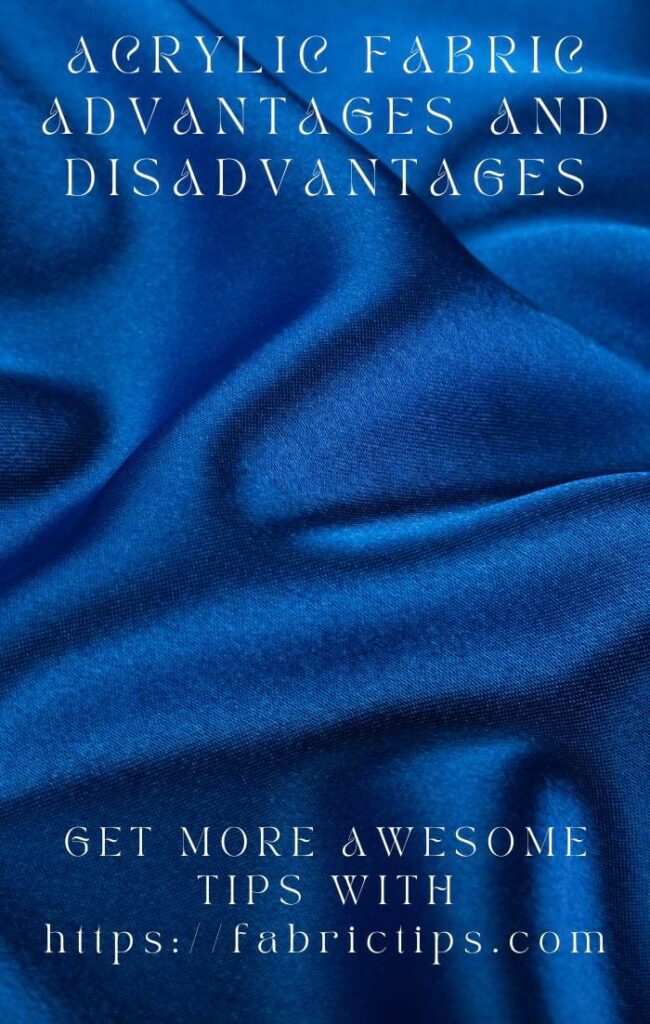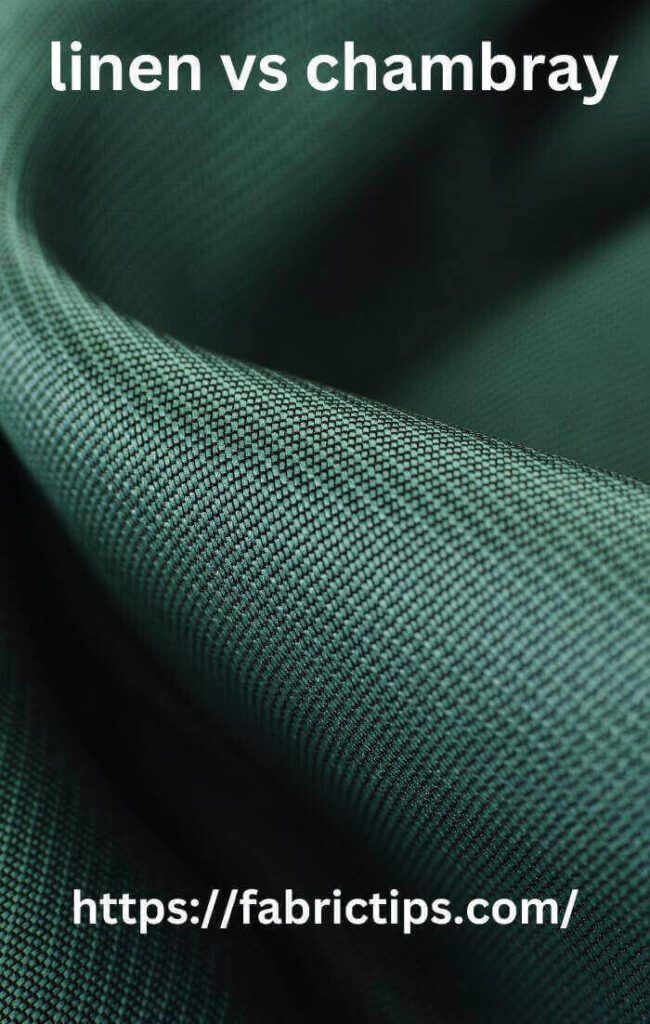Last Updated on December 13, 2025 by Wahid
Baby terry fabric consists of small loops on one side and a flat, jersey-like surface on the other, and it is highly desirable for its softness, silkiness, and elasticity. The fabric will retain its softness during and after multiple washings, making it ideal for washcloths, cloth diapers, wipes, bibs, and pads (breast pads, menstrual pads, and burp pads).
In this comprehensive guide, we delve into what is baby terry fabric, exploring its composition, unique characteristics, and myriad applications. Understanding the nuances of baby terry fabric is enlightening and essential for making informed decisions about clothing, accessories, and home textiles.
Baby Terry Fabric Sewing Recommendations: Ballpoint Needle
Baby terry fabric is eco-friendly, free of bleach and harmful chemicals, including lead, BPA, and phthalates, and has the best properties for babies & toddlers. Aside from absorbing fluids, these tiny loops are gentle on the skin, ideal for flats, fitted diapers, inserts, and trifolds.
When it comes to textiles, the term “baby terry fabric” might pique curiosity. What exactly is it, and why is it garnering attention? Baby terry fabric, renowned for its exceptional softness and versatility, stands out as a premium choice in the world of textiles. Join us on a journey to uncover the secrets what is baby terry fabric, behind this luxurious fabric and discover why it’s a must-have in any textile enthusiast’s collection.
Baby Terry’s Using Materials
Bamboo Baby Loop Terry is usually made with 70% Bamboo Viscose, 27% Organic Cotton, & 3% Spandex. It measures 54″ wide by 300 GSM. In terms of width, it stretches 50% and in terms of length, it stretches 20%. One side has small loops, while the back is flat. With a short loop, a soft texture, & thirsty absorbency, it is ideal for cloth diapers, wipes, washcloths, bath robes, baby towels, spa towels, loungewear, pillowcases, and other household items as well as personal care. The tiny loops and weave absorb water while being gentle on the skin. Actually, bamboo baby loop terry dyes very well.
Baby Terry vs. French Terry vs. Fleece: Comparison Chart
| Criteria | Baby Terry Fabric | French Terry Fabric | Fleece Fabric |
| Definition and Characteristics | Soft, plush terry fabric with looped pile construction. | Terry fabric with a smooth face and looped back. | Soft, synthetic fabric with a brushed surface. |
| Known for exceptional softness and comfort. | Smooth surface on one side, looped texture on the other. | Provides warmth and insulation. | |
| Good absorbency, suitable for towels and bathrobes. | Breathable and moisture-wicking, ideal for activewear. | Quick-drying and moisture-wicking, perfect for outdoor activities. | |
| Pros | Exceptional softness and comfort. | Soft and comfortable with a lighter weight. | Excellent warmth and insulation. |
| Good absorbency for various applications. | Durable and easy to care for. | Easy to care for and resistant to shrinking. | |
| Versatile fabric suitable for a range of uses. | Suitable for activewear and casual clothing. | Resistant to wrinkles and pilling. | |
| Cons | May not be as warm as fleece in colder climates. | May lack the plushness of baby terry fabric. | May lack the plushness and absorbency of terry fabrics. |
| Requires proper care to maintain softness. | Not as absorbent as traditional terry fabric. | Prone to pilling over time. |
This comparison chart provides a concise overview of the key differences between baby terry, French terry, and fleece fabrics, including their definitions, characteristics, pros, and cons. Consumers can use this information to make informed decisions based on their specific needs and preferences.
Different and Versatile Uses of Baby Terry Fabric
- Luxurious Bathrobes: Crafted from soft baby terry fabric, bathrobes offer a cozy and indulgent experience after a relaxing bath or shower.
- Absorbent Towels: Baby terry fabric towels are known for their superior absorbency, making them perfect for drying off quickly and comfortably.
- Comfortable Loungewear: Lounge pants, hoodies, and sweatshirts made from baby terry fabric provide unmatched softness and comfort for casual wear at home.
- Cozy Baby Apparel: Baby terry fabric is gentle on delicate skin, making it ideal for baby clothing such as onesies, rompers, and sleepwear.
- Stylish Activewear: Breathable and moisture-wicking baby terry fabric is a popular choice for activewear such as leggings, shorts, and workout tops.
- Plush Bedding: Sheets, pillowcases, and blankets made from baby terry fabric offer a luxurious feel for a comfortable night’s sleep.
- Trendy Accessories: Baby terry fabric is used in a variety of accessories including headbands, scarves, and even handbags, adding a touch of softness and style to any outfit.
- Practical Kitchen Textiles: Kitchen towels and oven mitts made from baby terry fabric are durable and absorbent, making them essential for everyday cooking and cleaning tasks.
- Decorative Upholstery: Baby terry fabric can be used to upholster furniture pieces such as chairs, ottomans, and cushions, adding a cozy and inviting touch to any room.
- Spa and Resort Essentials: From spa wraps and slippers to poolside towels, baby terry fabric adds a touch of luxury to the spa and resort experience, ensuring guests feel pampered and comfortable.
Pros and Cons of Baby Terry Fabric
Pros:
- Softness and Comfort:
- Baby terry fabric is renowned for its exceptional softness, providing a luxurious feel against the skin.
- Its plush texture enhances comfort, making it a popular choice for clothing, accessories, and home textiles.
- Absorbency:
- The looped pile construction of baby terry fabric lends itself to excellent absorbency.
- It efficiently wicks moisture away from the body, making it ideal for towels, bathrobes, and activewear.
- Breathability:
- Despite its absorbent nature, baby terry fabric remains breathable.
- Its airy construction allows for proper air circulation, promoting comfort and preventing overheating.
- Versatility:
- Baby terry fabric is highly versatile and suitable for a wide range of applications.
- From clothing and accessories to home textiles and upholstery, it can be used in various contexts to add comfort and style.
Cons:
- Not as Warm as Fleece:
- While baby terry fabric offers comfort and absorbency, it may not provide the same level of warmth as fleece fabric.
- In colder climates, it may be necessary to layer clothing or opt for warmer fabrics to stay insulated.
- May Require Special Care in Washing:
- Baby terry fabric, like many delicate textiles, may require special care in washing to maintain its softness and integrity.
- It is advisable to follow the manufacturer’s instructions and use gentle detergents to avoid damaging the fabric.
Based on the pros and cons of baby terry fabric, consumers can make informed decisions about its suitability for their specific needs and preferences. While it offers unparalleled softness, absorbency, and versatility, it’s essential to be aware of its limitations, such as warmth compared to fleece and the need for careful washing.
How to Care for Baby Terry Fabric
Washing Instructions:
- Machine washes baby terry fabric in cold or lukewarm water on a gentle cycle.
- Use a mild detergent to avoid harsh chemicals that can damage the fabric.
- Avoid using bleach or fabric softeners, as they can cause discoloration or reduce absorbency.
- Wash baby terry items separately or with similar colors to prevent color bleeding.
- For heavily soiled items, pre-treat stains before washing to ensure thorough cleaning.
Drying and Ironing Guidelines:
- After washing, tumble dry baby terry fabric on low heat or air dry to preserve its softness and texture.
- Avoid using high heat settings, as excessive heat can shrink or damage the fabric.
- Remove baby terry items promptly from the dryer to prevent wrinkles or creases.
- If ironing is necessary, use a low heat setting and iron on the reverse side of the fabric to avoid flattening the looped pile.
Storage Tips:
- Store baby terry items in a cool, dry place away from direct sunlight to prevent fading or discoloration.
- Avoid hanging baby terry garments, as the weight of the fabric can stretch or distort the shape over time.
- Instead, fold baby terry items neatly and store them in drawers or on shelves to maintain their shape and texture.
- Consider using breathable storage containers or garment bags to protect baby terry items from dust and moisture while in storage.
However, you understand what is baby terry fabric and how to care it. You can extend the life of your baby terry fabric items by following these care instructions and learning what is baby terry fabric.
Considerations for Using Baby Terry Fabric: Knowing Before You Sew
While baby terry boasts a delightful combination of comfort and style, there are a few things to consider before incorporating it into your next project:
- Warmth Level: Baby terry offers moderate warmth, making it ideal for everyday wear or layering in cooler temperatures. However, if you’re looking for a fabric specifically for battling extreme cold, fleece might be a better choice due to its denser construction.
- Price Point: Compared to some widely used fabrics like cotton jersey, baby terry can be slightly more expensive, especially for higher-quality materials.
- Sewing Techniques: Since baby terry is a knitted fabric, it requires specific sewing techniques to achieve optimal results. Using a ballpoint needle and a stretch stitch on your sewing machine is crucial to avoid snags and ensure smooth seams.
Despite these considerations, baby terry’s unique properties and versatility often outweigh them. With proper planning and sewing techniques, this fabric can elevate your creations to a whole new level of cozy comfort!
Common FAQs about Baby Terry Fabric
French Terry for Baby Onesies?
Aside from flame resistance, which I think is applied to sleepwear fabric, my only consideration would be washability and dry-ability. Babies’ clothes need to be washed and dried a lot. Can this fabric go in a dryer or is it going to be one of those things that gets thrown away after it is damaged in the laundry. – “petuniaaa“
I work in children’s sleepwear. We are only allowed to use Cotton in children’s sleepwear if the garment is tight-fitting. In order for something to be loose fitting we need to use Polyester. The downside to Cotton is it’s highly flammable so the slightest spark could ignite the garment. Tight-fitting clothes just have less of a chance of catching a stray spark or open flame. That is really the reason most children’s clothing is polyester. – “QuyynseyFae“
I just bought a hoodie with a soft lining, is that baby terry?
Chances are high that yes, the soft lining in your hoodie is baby terry fabric! It’s a popular choice for hoodies and sweatshirts due to its comfortable and breathable nature.
What’s the difference between baby terry and regular terrycloth?
Regular terrycloth, often used in towels, has loops on both sides, making it very absorbent. Baby terry, on the other hand, only has loops on the inside, creating a smooth, soft outer surface and a cozy looped interior.
Is baby terry good for baby clothes?
Absolutely! Baby terry’s softness and breathability make it a gentle and comfortable fabric for baby clothes like onesies, blankets, and hats. It’s perfect for keeping your little one warm and happy without being too stuffy.
Can I use baby terry for sewing projects?
Yes, you can! Baby terry is a versatile fabric, but keep in mind it’s a knit. You’ll need to use a ballpoint needle and a stretch stitch on your sewing machine to avoid snags and achieve clean seams.
Is baby terry warmer than fleece?
Not necessarily. Fleece, especially thicker varieties, can trap more air and offer greater warmth for very cold weather. Baby terry offers moderate warmth, ideal for everyday wear or layering.
Where can I find baby terry fabric to buy?
Many fabric stores online and offline stock baby terry fabric. Look for stores specializing in apparel fabrics or knits.
Final Thoughts on Incorporating Baby Terry into Your Lifestyle
It is now clear to you exactly what is baby terry fabric and everything it can do for you. Incorporating baby terry fabric into your lifestyle can enhance comfort and luxury in everyday activities. Whether it’s wrapping yourself in a plush bathrobe, drying off with a soft towel, or lounging in cozy activewear, baby terry fabric adds a touch of indulgence to your routine. The benefits of baby terry can last for years if you follow proper care instructions and choose high-quality items.
Finally, baby terry fabric offers unmatched softness, absorbency, and versatility, making it a popular choice for various applications. By understanding its unique features and advantages, you can make informed decisions about incorporating baby terry into your lifestyle and enjoy the comfort and luxury it provides.


